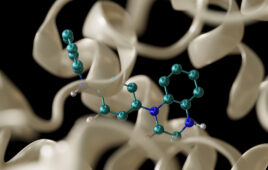 In 2021, two scientists founded Parallel Bio to harness the human body’s ability to fight disease using the immune system. The Cambridge, Massachusetts–based company is developing a platform for drug discovery and development that replicates human immune systems at population scale.
In 2021, two scientists founded Parallel Bio to harness the human body’s ability to fight disease using the immune system. The Cambridge, Massachusetts–based company is developing a platform for drug discovery and development that replicates human immune systems at population scale.
The company has grand ambitions. “Nearly 95% of drugs that make it to human trials fail even though they worked on animals first,” said CEO Robert DiFazio. “Our goal is to flip that on its head — we want to turn that 95% failure rate into a 95% success rate.”
The company’s co-founders, DiFazio and Chief Scientific Officer Juliana Hilliard, were roommates in San Francisco when the COVID-19 pandemic broke out. DiFazio has a Ph.D. in immunology of infectious disease and ran drug discovery programs at Stanford. Hilliard has a masters in molecular bioengineering from the Technical University, Dresden and had worked as the staff scientist, organoid development at System1 Biosciences.

Robert DiFazio
“We didn’t really talk about science, and then the pandemic happened,” DiFazio said. The company was born out of conversations related to drug development and the need for better immune system models. “We talked about how we need better [drug-development] technologies,” DiFazio said.
The company would eventually win support from the startup accelerator Y Combinator, move to Massachusetts and win $4.3 million in seed funding.
Parallel Bio has created what it terms a “human immune system in a dish” that it plans to use to predict efficacy and safety in drug development. “Our ultimate goal is to be able to take patients enrolled in a clinical trial and essentially create organoids from them,” DiFazio said. Parallel Bio envisions eventually using organoids to replicate a clinical trial. Data from the organoids will then help drug developers understand the safety and efficacy of the drug candidate.

Juliana Hilliard
Organoids make it possible to test a drug candidate in thousands of patient backgrounds. “When you’re developing drugs, you might be testing them in single-sex inbred mice,” DiFazio said. “Obviously, humans aren’t all inbred men. So we really need a technology [like organoids] that can capture the full diversity of people.”
“Things like organoids, for example, are the most accurate replica of a human organ,” Hilliard said. “If you have that one-to-one comparator, it’s going to be that much more predictive of what goes on in humans.”
Parallel Bio’s executives point to the passage of the FDA Modernization 2.0 language included in the omnibus spending bill signed by President Biden as a positive omen for organoid adoption. The law eliminates the animal testing requirement for new drugs and biosimilars.
“The regulatory change is a critical first step toward replacing animal models with human ones and ultimately bringing new drugs to patients faster,” DiFazio said.
DiFazio said the pharma companies it has encountered expressed interest in emerging technologies such as organoids and similar technologies that can help the industry transition from animal testing.
Adoption of organoids and other technologies is likely to ramp up once FDA approves a drug that was developed “start to finish in an organoid,” DiFazio predicted.
“Over time, as technology such as organoids become more adopted, you’ll probably see better drugs, faster times to market and things like that,” Hilliard said. “And you’ll probably see fully human models more and more.”
While the pharma industry has a long history of using animal testing in drug development, drug developers are pragmatic in the end. “I think they’re naturally skeptical of any new technology,” Hilliard acknowledged. But pharmaceutical companies are likely to ultimately gravitate toward whatever technology works. In the end, they are likely to adopt “whatever they can use to test drugs that will work the fastest and be the most predictive,” she said.
Filed Under: clinical trials, Drug Discovery, Drug Discovery and Development, Uncategorized





Tell Us What You Think!
You must be logged in to post a comment.